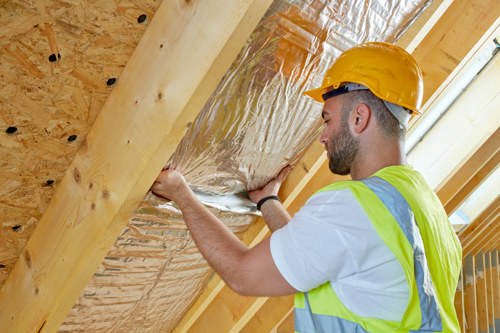In the dark days of winter, the idea of a lovely cosy home is very comforting. No-one wants a house which leaks heat out of the walls and is constantly draughty. Not only is it uncomfortable, it also costs a fortune to heat. In these cases, insulation is the answer.
But come the balmy hot days of summer and the cosy winter retreat becomes an oven. So, how do we tackle this conundrum? Is it possible to make sure your home is warm in winter AND cool in summer? The answer is YES - as long as you use the correct insulation (and embrace some other factors which we shall come onto in a minute).
Some health experts are blaming insulation for exacerbating the problem of overheated homes. In some ways they are right. Using the wrong insulation can indeed be the cause of trapping unwanted heat inside, making the house at best unbearably hot and sticky and at worst killing elderly and vulnerable people. Heat-related deaths are predicted to treble by 2050.
But fear not, there is a type of insulation which can help in winter AND summer. Reflective insulation has been designed with the specific ability to counteract heat transfer via radiation. Or, in everyday language, it reflects the heat away to ensure the home stays cool.
This type of insulation contains the vital reflective layer which helps keeps a home cool and can be used in new builds, extensions, and loft conversions as well as for refurbishing existing houses.
But while the type of insulation you use is key to whether your home stays cool in summer, there are other factors to take into account.
These include ‘solar gain’ – that is heat pouring in through windows which face the sun. Using curtains or shutters (here the Mediterraneans have the right idea!) can make a huge difference. If you’re building an extension, a new home or looking at the (often limited) options for window position in a loft conversion, it’s worth taking the time and effort to work out where the sun will be to minimise solar gain. Some of this will be down to the architect.

Unfortunately, too many people – householders, office blocks, huge commercial buildings - go about addressing the issue of overheating the wrong way. Rather than looking at the fabric of the building (ie making sure the structure has the ability to stay cool) they are like King Canute fighting back the waves. Using air conditioning may provide a short-term answer, but it is causing two huge problems. One is that it is vastly increasing the energy bills of those homes or business owners, burning money which could otherwise be invested in improving the fabric of their building. Secondly, it’s contributing to our already immense global warming problem. Which in turn increases our need to find ways to keep our homes cool.
So it’s important to take a step back and look at what you’re trying to achieve – a cool home, yes. But also lower bills and a chance to protect the planet and minimise the destruction inflicted on it, and us, by short termism.



